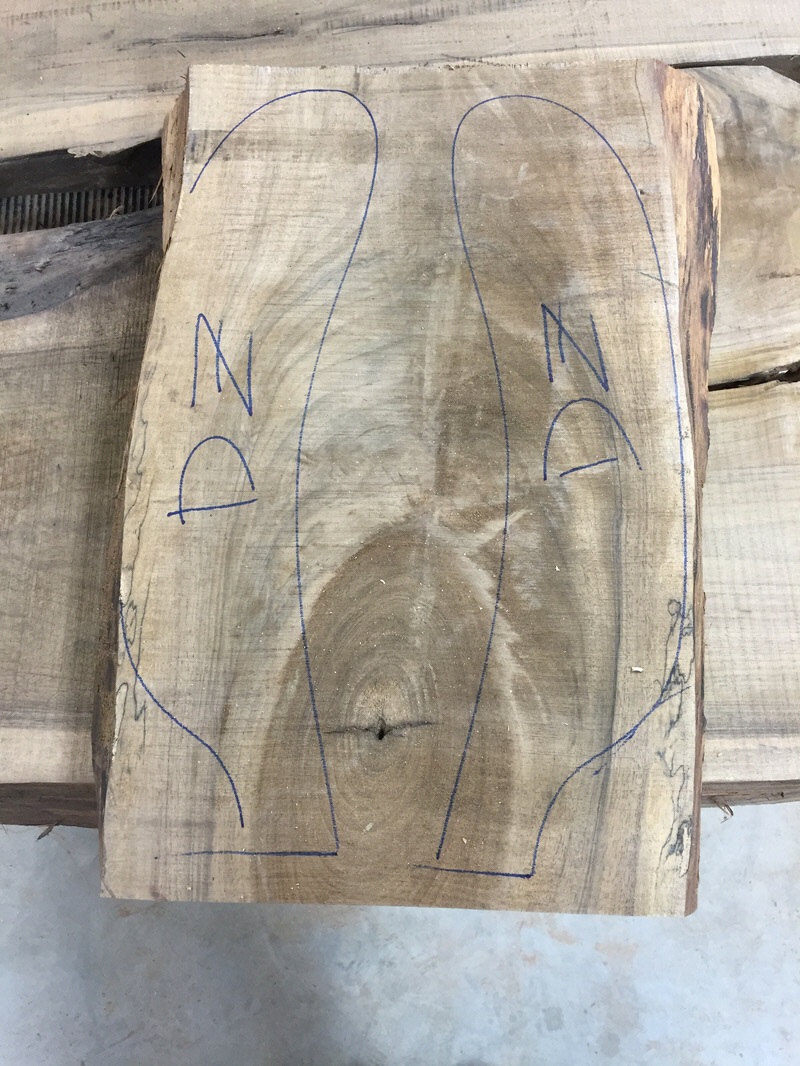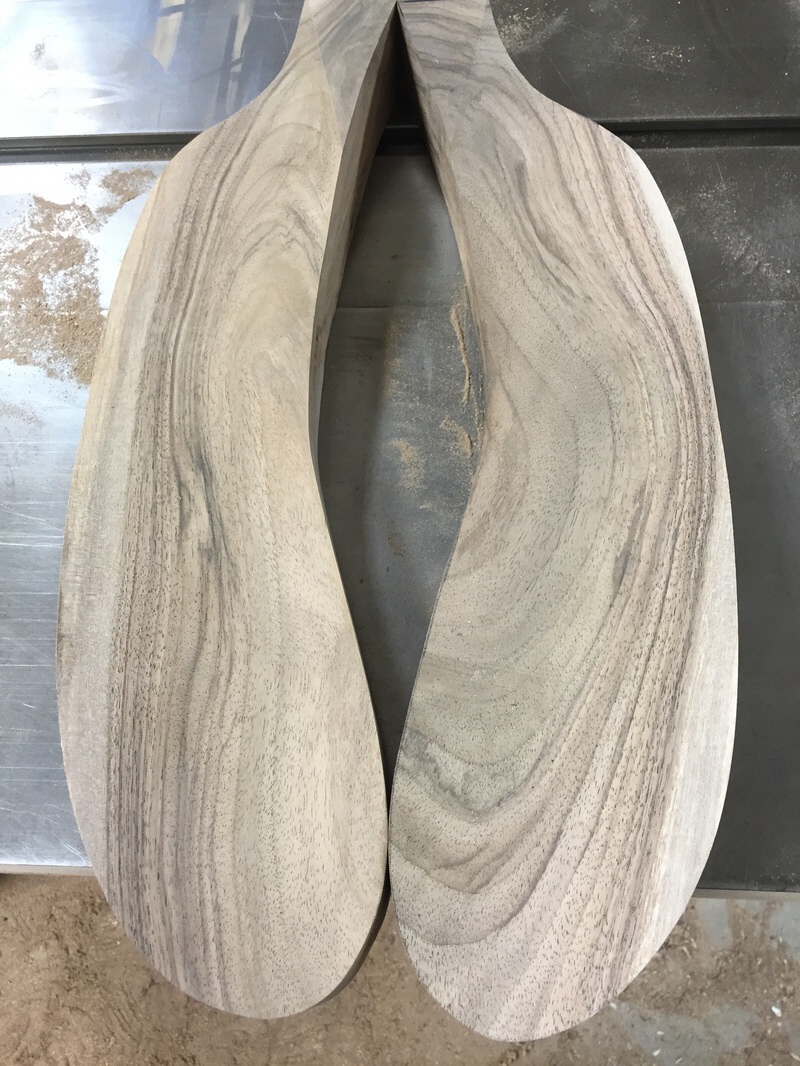What was the biggest surprise when you started your first industrial design job? For me, coming out of three years getting my hands dirty in the studio at school, it was the work environments. During multiple internships and my first three ID jobs, I learned that ID work took place in dull offices with music chosen by those with seniority—and you never needed to wash your hands.
Over on the Core77 Discussion Boards, a similar discovery has come as a surprise to new industrial designer TSE2. S/he writes:
I got an internship at a famous design firm for this summer [and] I am quite disheartened from what I've seen. All the designers at this firm just sit at desks all day and plug stuff into Rhino and work from 9am to 7pm. I've asked around and they say it's basically about 90% of what they do... 5% is working on models occasionally, and the other 5% is traveling to do some research.
Is this normal? I never could see myself doing a job sitting in a cubicle working on Rhino all day for ten hours a day. I want to ask you guys who have been in the industry long enough to know, is Industrial Design a desk job? Does it vary from firm to firm? Industry to industry?
Here are some excerpts of the excellent answers to the question "Is Industrial Design a Desk Job?" provided by our board participants:
For Now, For You, Yes
Holtag, Singapore: "I'd say that for at least 75% of us out there, it's desk job. That just comes with the manufacturing process. You'll be able to get away more from your desk as you rise in the organization. And there are positions which are much more hands-on. But if you're thinking of well known studios, you'll have to accept that most of the work is done at a desk."
Why Your Hands Will Stay Clean
Jaded, Detroit: "[The larger places I've worked] have professional modelmakers, so other than quick mockups to study form, you will almost never spend weeks working on a final model like you do in school. The reality is, as a designer you are more valuable to a corporation designing sketching/modeling, not sanding foam."
ID and Field Research Require Different People
Iab: "Field work is done by those who have the right personality for it. I have found rarely that an IDer is good at building the relationships for field research. I don't want them in front of the customer."
To Get Away From the Desk, You Need a Valid Reason
Iab: "So if research is out, other than the occasional vendor visit, what do you propose doing in the field?"
Depends—Are You at a Design Factory, Studio or Strategy Consultancy?
Bepster, Switzerland: "While I was at consultancies, I actually spent more time at the desk [than] I do now in-house. Simply because I am in more meetings concerning the future and strategy of the company, syncing up with brand management, portfolio and project management."
Michael DiTullo, Southern California: "Is it a 'design factory' with people just pumping out final designs all day or a 'design studio' which is more of what Bcpid described [see 'Strategies...' below]. Other places are more research and strategy oriented where the final deliverable is always just a powerpoint of recommendations.
"Research the place you want to work, ask questions. I have interviewed at several 'design factories' and I avoided them like the plague. Likewise I've always had an allergic reaction to the design strategy houses (I want to make stuff). Some people like that though, so to each their own. The studio model has always fit me well."
Are We Talking Desk, or Cubicle?
Bepster, Switzerland: "The desk is certainly your your home-base and cockpit from where you carry out your tasks…. What concerned me about your experiences wasn't that designers are more desk oriented, but that you work in a cubicle. That sounds indeed terrible.
"There are desks and then there are desks. While I spend a lot of time at my desk, I am surrounded by models, prototypes and sketches in an open studio space. So just doing a 360 on my chair, I can see what designers, engineers and managers are doing."
Getting Away From the Desk Can Get You Excited to Return to It
Jaded, Detroit: "Today…I headed out for a few hours of research on some packaging I'm designing. I'm…more of a consumer product guy, and don't typically do much packaging so I wanted to get some good background. Google is no substitute. I opened and closed boxes, felt how certain hinges, and fasteners felt, etc... I've done this before on projects, but I find that every time I go out I get something different out of it.
"I saw some really beautiful things mixed in with a lot of badly designed pieces. Now I am so fired up to 'sit at my desk' and sketch a ton of ideas!"
Rsuzuki, Denver: "Most of my work is at a desk. However, I do find a lot of value in taking time away from my desk when brainstorming ideas. The desk can become a perfect secluded hermit hole void of human interaction and endless Google searches inhibiting true progress; where stepping away and talking to coworkers or making observational research may speed up the process."
Strategies for Getting Away From the Desk
Ralph Zoontjens, the Netherlands: "Of course, CAD work is a lot of sitting at a desk and those jobs can be tedious so you have to have some commitment and that does mean days with 10 hours of almost continuous CAD work. When possible, I recommend to work somewhere different than your desk. Having a separate desk for sketching/making is already a great step. Getting a foam cutter to rapidly work in 3D is another step you can easily make. Do a before-lunch walk or run, or meet some friends/colleagues for coffee. The field of embodied interaction has developed some approaches that let designers work more with their full bodies rather than sitting at a desk, also user research in the field is a great way to enrich your work. It depends a lot on the firm you work in how much time you will spend at a desk so it's good to inquire."
Bcpid: "Most of what I do isn't CAD, even if a lot does occur at a desk. My work isn't monotonous at all most of the time. I do research onsites, lots of ideation sessions with the team to work through the product's problems, meet with clients and vendors, write reports, use products to understand and speak to ergo issues, sketch, make mockups, build CAD, work on GUIs sometimes, work with engineers on configurations, it varies quite a bit and really depends on what the project's goals are - often the project goal isn't even about delivering a finished product design….
"I've always worked in smaller groups and found I like the constant mixing up of functions and project types - maybe that's what the OP needs also?"
Slippyfish: "[I] was seeing a physical therapist to help recover from some injuries [and they] suggested getting up, walking around more often, to simply get flexibility and mobility. The odd part was that once I followed the PT's guidance, my overall 'productivity' actually increased - I was talking to and engaging with other people, seeing what was going on in the model shop, having chance encounters by the water coolers, etc."
There's Variety in Phases
Jaded, Detroit: "I would say 80-90% of the day is working at a desk. Mine is a mix of 3D, and sketching. I leave the office as much as possible at the start of a project to go and look/touch things that will help inspire or inform me on the project."
Michael DiTullo, Southern California: "Everywhere I've worked [which has been design studios] there has tended to be phases of things, stretches of time you would be in CAD, stretches of time you would be brainstorming and sketching as a team, stretches of time in the field doing research with consumers, retailers, and testing competitor product. I like to have enough time to get in the flow of something, where you are not shifting gears every day, but there is enough variety to make interesting."
Standing vs. Sitting
Slippyfish: "I and my team now have standing desks (except for the intern). They are height-adjustable with a hand crank. Most of the team tends to spend a week or two with them up, and then crank it down, and stay there for a couple weeks. I've found if I need to pump some intense CAD that sitting tends to work better for that kind of concentration. Standing desks encourage walking around - no surprise there. But especially for the more senior people on the team, I think they need to realize that the body language and persona conveyed by sitting all day at your desk with your headphones on - "being productive" - is going to be a hindrance in getting where they want or need to go with their career, unless their career goal is CAD modeling/rendering superstar, full stop."
Ralph Zoontjens, the Netherlands: "For me as an independent designer with mostly foreign clients, it has become quite too much a desk job.
I do travel to clients but Skype with screen sharing is a good solution to work remotely as well. So I'm interested in adding a small standing desk to my studio, I believe it will increase productivity and well, general household happiness levels."
Architecture's Got the Same Problem
Ross McCoy, Connecticut: "Seems like the worlds of architecture and ID are about the same on a day to day basis. 90% drafting/modeling/working out details. 10% field work. Not sure if this is a good realization or a bad one. Definitely something to think about while debating career choices."
__________
What's your opinion? Does your ID job feel like you work at Donald Deskey Associates? Do you find yourself spending more time in the bathroom just to get away from that horizontal slab? Got any other clever strategies for sneaking away? Let us know in the comments, or head on over to the discussion boards to sound off.
![]()























































































